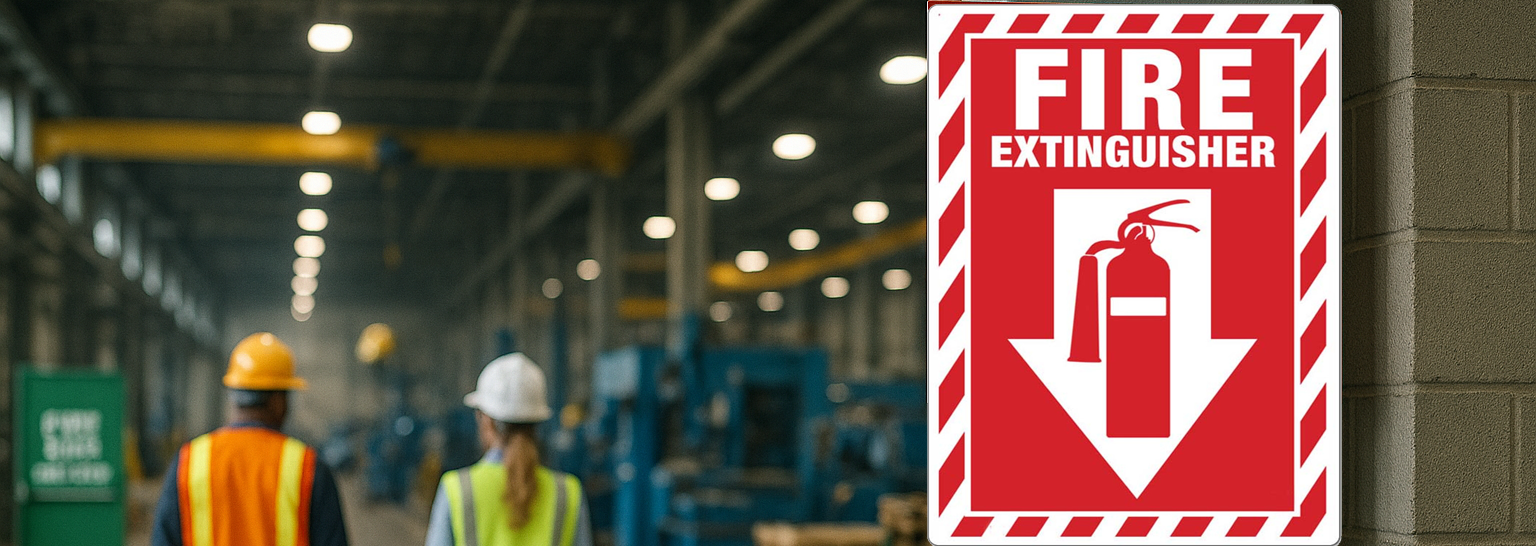Fire and Ignition Source Safety
Feb 21st 2022
Hazards of Fire in the Workplace
How Do Fires Start?
Fires require three elements: heat, oxygen, and fuel—often present in industrial settings.
Fires spread via convection: hot air rises and pulls in cooler, oxygen-rich air to feed the flames. Prevention focuses on keeping the three elements separated and ensuring robust emergency measures are in place.
Fire Prevention Techniques
Good Housekeeping
Keep the workplace free of clutter, debris, and combustible dust. Separate heat sources from fuel and train all employees on daily housekeeping routines:
- Keep potential fuel away from ignition sources.
- Regularly remove dust, grease, and other flammable residues.
- Clean all spills immediately.
- Store combustible materials in designated safe areas.
Ignition Source Best Practices
Identify all potential ignition sources (electricity, flammable liquids/chemicals, static, lighters, matches) and separate them from fuel.
Electricity
- Keep electrical cabinets closed.
- Properly ground equipment.
- Avoid overloaded circuits/outlets.
- Keep equipment clean and lubricated.
Flammable Liquids
Many common liquids (gasoline, oil, hydraulic fluid, paints/thinners) emit flammable vapors. Create clear handling and storage procedures.

| Flammable Liquid Category | Flashpoint (°F) | Boiling Point (°F) |
|---|---|---|
| Category 1 | < 73.4° | ≤ 95° |
| Category 2 | < 73.4° | > 95° |
| Category 3 | ≥ 73.4° to ≤ 140° | — |
| Category 4 | > 140° to ≤ 199.4° | — |
Other Ignition Sources
Beyond electrical sources and flammable liquids, watch for static discharge from personal electronics, and enforce designated smoking areas that are safely separated from fuel sources.
The Written Plan
A written fire prevention plan must be posted and accessible. Include:
- List of all potential fire hazards.
- Handling/storage procedures for hazardous materials.
- Comprehensive list of ignition sources & controls.
- Location/type of emergency fire equipment.
- Procedures to control/dispose of flammable waste.
- Safeguards for heat-producing machinery & responsible roles.
- Role responsible for controlling fuel source hazards.
- Training/refresh schedules and documentation access.
Emergencies

Maintain a site-specific emergency response procedure with exit routes, emergency contacts, assembly points, and fire-extinguisher locations. Train workers to remain calm and follow the plan.
| Fire Class | Fuel Type | Notes |
|---|---|---|
| Class A | Wood, paper, some plastics | Common combustibles |
| Class B | Flammable liquids | Includes flammable vapors |
| Class C | Electrical equipment | De-energize when possible |
| Class D | Combustible metals | Requires Class D extinguishers |
Conclusion & Standards
Preventing unplanned fires is foundational to workplace safety. A compliant prevention plan, disciplined housekeeping, careful control of ignition sources, and robust emergency procedures reduce the risk of severe injury, fatalities, and property damage. Fire prevention is one component of a comprehensive fire safety program that includes emergency response, safe chemical handling, and clear exit route procedures.

